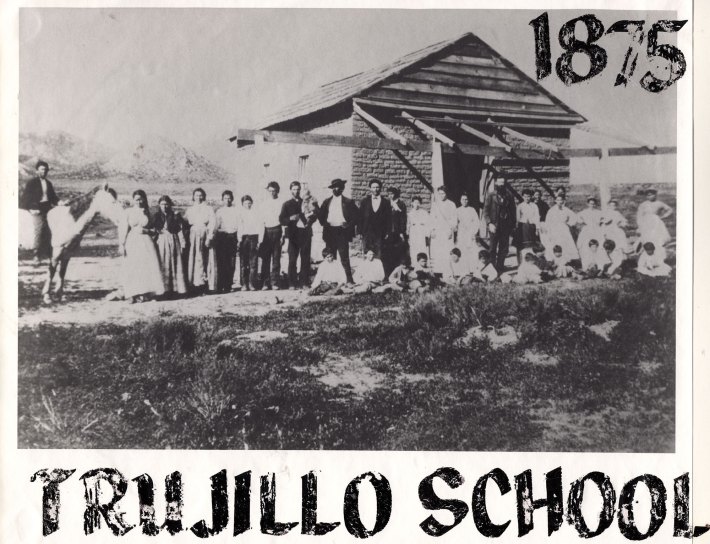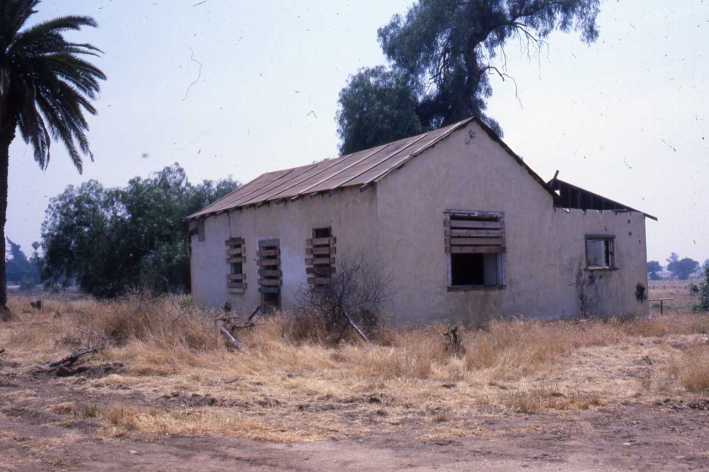Drone Crackdown on Illegal Fireworks Yields 65 Citations, $97,500 in Fines
New aerial surveillance program shows mixed results across neighborhoods as complaints increase.
The Spanish Town Heritage Foundation champions La Placita de los Trujillos as a place of history, learning, entertainment and the arts.

The Spanish Town Heritage Foundation recently held the Ninth Annual Riverside Tamale Festival in Downtown Riverside organized to support the preservation of the Trujillo Adobe. So, this is a good time to briefly review the history the Trujillo Adobe and surrounding area which will to be used for education. I say briefly, because to fully tell the story, one needs much more than this column. The Spanish Town Heritage Foundation champions the Hispanic Legacy of the Inland Empire’s first settlers by sharing their stories, creating cultural learning opportunities, and a leading community effort to restore and revitalize La Placita de los Trujillos, a place of history, learning, entertainment and the arts.
The history of the Trujillo settlement dates back to 1842, twenty-eight years before the establishment of Riverside. The year before, Lorenzo Trujillo traveled with the Rowland-Workman party from New Mexico to Los Angles. The group walked the Old Spanish Trail from Abiquiu, New Mexico to Southern California. An early promise of land fell through but in 1842 Benjamin Wilson, who had just purchased much of Rancho Jurupa from Juan Bandini, promised about 2000 acres of land on both sides of the Santa Ana River if the group would settle there and form a buffer against marauding Native Americans.
Lorenzo became the leader of the group who settled on the southeast side of the river. This settlement became known as Placita de Los Trujillos (the little plaza of the Trujillos). A sister settlement on the northwest side of the river became Agua Mansa (Gentle Water). Both together sometimes were referred to as San Salvador. Lorenzo Trujillo was the leader until his death in 1855. His four sons took on the role of leadership after him. The Trujillo home became the main hub of the community.
The winter of 1862 brought huge changes to both communities. Days of hard rains finally caused the Santa Ana River to overflow its banks and flood both communities. Fortunately, the priest, Father Borgotta, at the San Salvador church during the night of January 22, heard the sound of the rushing waters and fervently rang the church bell, waking and warning the residents of the communities. No lives were lost but almost all the homes and property were washed away and covered with silt and dirt from the river. The only surviving structures were the church and the home and store of Cornelius Jensen.

The residents, including the Trujillo brothers rebuilt, this time on higher ground on the La Loma hills overlooking the river. One of these structures was the Trujillo Adobe, the only remaining structure of the early community. A school was established in 1875 very close to the adobe. In the early 1900s a smaller adobe building was erected and became known as the Cantina, an active social center for the community. Following the settlement and establishment of the city Riverside in 1870, the area was often referred to as Spanish Town, on account of the Spanish language spoken by the residents there.
Another change that affected the early Hispanic settlements was the No-Fence Act in 1872. Previous to that, the law favored the grazing economy of cattle, horses and sheep which most of the residents of La Placita practiced. Herds were free to graze on the open land and farmers needed to build fences if they wished to protect their crops. With the new law in1872, this was reversed. Now grazing enterprises were responsible for keeping their wandering animals out of the fields of crops. Wandering animals could be impounded and fees charged for the owners to reclaim them.
The first recorded sale of the Trujillo adobe was in 1918 when Antonino Trujillo sold the building to Juan Trujillo. The adobe remained with the Trujillo family until 1957 when Mr. and Mrs. Robert Snyder purchased the property. They lived there until 1969 when they sold it to JoAnn Dreesen, a Trujillo descendent. Thus, the old adobe came back into the family.
In 1976 JoAnne Dreesen gave the property to the County of Riverside with the understanding that the County would preserve and maintain the site as a park. However, because of lack of funds and rain which once more caused damage, the remaining adobe walls were covered over with a wooden structure, waiting for funds and a push for preservation. That day and time has now come.

To dig deeper into the colorful and important early history of this area, a history which precedes Riverside, one should read more. A good summary is “The Trujillo Adobe – La Corazon de La Placita” by Nancy Melendez in the April 2017 issue of the Journal of the Riverside Historical Society. The most complete historical account is in Defending Eden by Joyce Carter Vickery.
Today the Agua Manza settlement is remembered with the Agua Mansa Pioneer Cemetery administered by the San Bernardino County Museum and is California State Historical Landmark #12. A full-size replica of the old San Salvador Church is a visitor center located at 2001 W. Agua Mansa Road in Colton and is open Tuesday through Saturday from 10:00 a.m. to 3:00 p.m.
The La Placita settlement today is remembered with the site of the remains of the old Trujillo Adobe. Thanks to the efforts of the Spanish Town Heritage Foundation and local state politicians a large state grant was recently given to the Riverside County Parks District (who years ago were entrusted with the ownership of the property) to preserve, renovate and maintain the Adobe and surrounding area as a historic educational site.
Last year in July the City of Riverside, to help recognize the location and what is happening on the site, renamed about one mile of Orange Street, north of the 60 freeway, as Spanishtown Road.
The site has been designated as County of Riverside Historical Site #9, California Office of Historic Preservation site #75 and City of Riverside Landmark #130.
Let us email you Riverside's news and events every morning. For free!